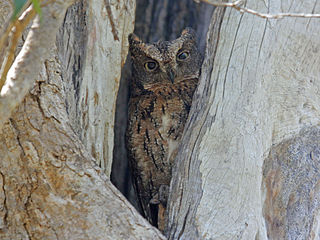
Madagascar, officially the Republic of Madagascar, is an island country lying off the southeastern coast of Africa. It is the world's fourth largest island, the second-largest island country and the 44th largest country in the world. Its capital and largest city is Antananarivo.

The Sesiidae or clearwing moths are a diurnal moth family in the order Lepidoptera known for their Batesian mimicry in both appearance and behaviour of various Hymenoptera.

The Malagasy are a group of Austronesian-speaking ethnic groups indigenous to the island country of Madagascar. Traditionally, the population have been divided into ethnic groups. Examples include "Highlander" groups such as the Merina and Betsileo of the central highlands around Antananarivo, Alaotra (Ambatondrazaka) and Fianarantsoa, and the "coastal dwellers" with tribes like the Sakalava, Bara, Vezo, Betsimisaraka, Mahafaly, etc. The Merina are also further divided into two subgroups. The “Merina A” are the Hova and Andriana, and have an average of 30–40% Bantu ancestry. The second subgroup is the “Merina B”, the Andevo, who have an average of 40–50% Bantu ancestry. They make up less than 1/3 of Merina society. The Malagasy population was 2,242,000 in the first census in 1900. Their population experienced a massive growth in the next hundred years, especially under French Madagascar.

The Malagasy or striped civet, also known as the fanaloka or jabady, is an euplerid endemic to Madagascar. It is the only species in genus Fossa.
Hemiceratoides hieroglyphica is a moth from Madagascar. It was discovered in 2006 that it frequents sleeping birds at night, and drinks their tears, using a specialized, harpoon-like proboscis. Tear-feeding moths outside of Madagascar, are not directly related to this species, and have evolved dissimilar mechanisms for drinking from large animals like deer or crocodiles.

The Madagascar scops owl, also known as the Malagasy scops owl or Rainforest scops owl, is a species of owl in the family Strigidae. It is found throughout Madagascar, now that is has recently been lumped with the Torotoroka scops owl, with which it was long considered a separate species from. The nominate O. r. rutilus is referred to as Rainforest scops owl.
Malagasy mythology is rooted in oral history and has been transmitted by storytelling, notably the Andriambahoaka epic, including the Ibonia cycle. At least 52-59% of Madagascar are adherants of the religion, which is known as Fomba Gasy. Adherence to Fomba Gasy is high amongst the Sakalava people, as they are reluctant to convert to faiths of foreign origin.

The Malagasy Lutheran Church is one of the most important Christian churches in Madagascar, established in 1950 by the unification of 1,800 Lutheran congregations in central and southern Madagascar. The oldest of these congregations was founded in the early 19th century with the arrival of missionaries from the Norwegian Missionary Society (NMS).

Malagasy is an Austronesian language and dialect continuum spoken in Madagascar. The standard variety, called Official Malagasy, is an official language of Madagascar, alongside French. Malagasy is the westernmost Malayo-Polynesian language, brought to Madagascar by the settlement of Austronesian peoples from the Sunda islands around the 5th century AD. The Malagasy language is one of the Barito languages and is most closely related to the Ma'anyan language, still spoken on Borneo. Malagasy also includes numerous Malay loanwords, from the time of the early Austronesian settlement and trading between Madagascar and the Sunda Islands. After c. 1000 AD, Malagasy incorporated numerous Bantu and Arabic loanwords brought over by traders and new settlers.
Agriomelissa is a genus of moths in the family Sesiidae.
Agriomelissa aethiopica is a moth of the family Sesiidae. It is known from Ethiopia.
Agriomelissa amblyphaea is a moth of the family Sesiidae. It is known from Kenya.
Agriomelissa brevicornis is a moth of the family Sesiidae. It is known from Cameroon.
Agriomelissa ursipes is a moth of the family Sesiidae. It is known from Somalia and South Africa.
Agriomelissa victrix is a moth of the family Sesiidae. It is known from Cameroon.

The Colony of Madagascar and Dependencies was a French colony off the coast of Southeast Africa between 1897 and 1958 in what is now Madagascar. The colony was formerly a protectorate of France known as Malagasy Protectorate. The protectorate became a colony, following Queen Ranavalona III's exile to Réunion.
Scopula malagasy is a moth of the family Geometridae. It was described by Viette in 1977. It is endemic to Madagascar.
Hypena malagasy is a moth of the family Erebidae first described by Pierre Viette in 1968. It is native to central eastern Madagascar.

Helcystogramma convolvuli, the sweet potato moth, sweetpotato webworm moth, sweetpotato leaf roller or black leaf folder, is a moth of the family Gelechiidae. It is mainly found in Asia and Africa, but there are also records from Oceania, the Middle East, the Caribbean and Florida in the United States. The species is also found on the Canary Islands and Madeira.

Borocera cajani, also known as landibe in Malagasy, is a species of silk-producing lasiocampid moth endemic to Madagascar. It is often confused with the similar Borocera madagascariensis, which has the same Malagasy name. However, B. cajani is the species associated with silk production in highland Madagascar, while B. madagascariensis is found in the coastal portion of the island.









